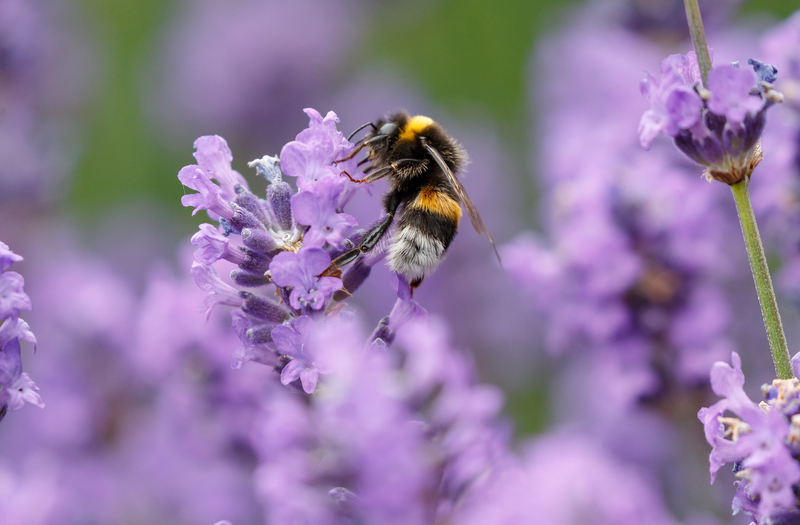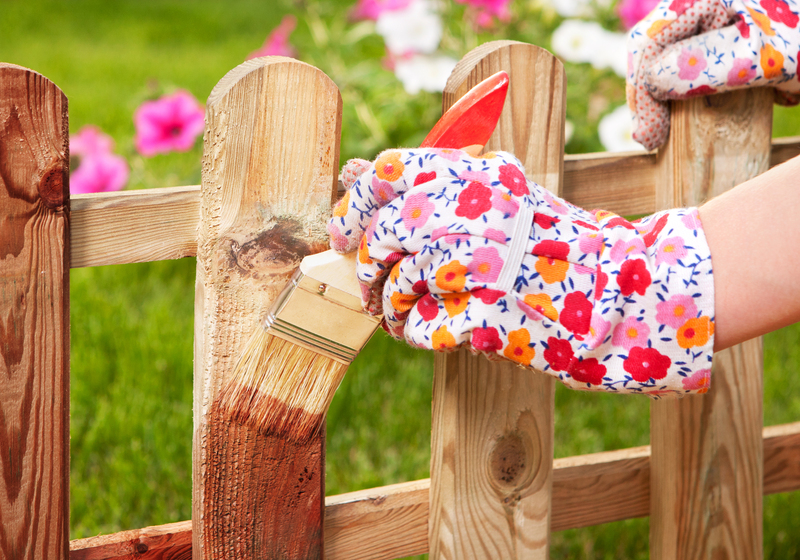Steps to a Playful and Safe Children's Garden
Posted on 10/09/2025
Introduction to Creating a Playful and Safe Children's Garden
A children's garden is far more than just a miniature version of your backyard or a patch of grass with a few toys. It is a magical and educational environment designed specifically with young explorers in mind. Designing a playful and safe children's garden encourages imaginative play, helps develop essential motor skills, and inspires a love of nature from an early age. In this comprehensive guide, we will walk you through practical steps to create a playful and safe garden for kids that balances fun and security while nurturing kids' natural curiosity.

1. Planning: Design with Safety and Fun in Mind
Every successful children's garden begins with thoughtful planning. Before picking up a shovel, sit down to consider your space, the age group of the children who will use the garden, and your available resources.
Assess the Space and Sunlight
- Observe sunlight patterns: Where does the sun hit your yard? Most garden plants need at least six hours of sunlight daily.
- Check the terrain: Is your ground level, sloped, or uneven? Consider whether extra grading, paths, or terracing are needed to prevent tripping hazards.
- Proximity to home: Children's gardens should be visible from windows or patios for easy supervision.
Establish Clear Boundaries
- Fencing: A low, child-safe fence defines the garden space, keeps children in, and keeps pets or wildlife out.
- Naturally defined borders: Hedge rows or living fences offer a soft, natural feel and additional sensory value.
2. Choosing Child-Friendly and Non-Toxic Plants
Plant selection is critical for any playful and safe children's garden. Not all beautiful plants are suitable for little hands. Be sure to choose plants that are non-toxic, durable, and, ideally, interactive.
Best Plants for a Children's Garden
- Sunflowers: Tall and bold, these inspire awe and can be used to build living forts or tipi houses.
- Snapdragons and nasturtiums: Both are edible, colorful, and safe for kids to touch.
- Strawberries and cherry tomatoes: Encourage gardening for kids by planting easy-to-pick, edible crops.
- Lamb's ear and mint: Soft, textured, and aromatic herbs add sensory delight.
- Blueberries and raspberries: Fun to harvest, these berries add sweetness and excitement to the garden.
Important: Avoid any plants known to be toxic to children or those that have thorns, spines, or prickly leaves. Examples to exclude are foxglove, oleander, and digitalis.
3. Creating Safe, Inviting Paths and Play Surfaces
Safe navigation is fundamental in a kids' garden. Children need clear, smooth, and non-slip paths to wander and explore.
Material Choices for Pathways
- Mulch or bark chips: Soft underfoot and visually appealing, ideal for play spaces.
- Stepping stones: Create hopscotch trails or winding paths for exploratory fun.
- Grass or ground covers: Hardy varieties withstand trampling and provide a cushioned surface.
- Rubber mats: Especially useful under play structures for extra safety.
Ensure all pathways are level, wide enough for running and wheelchair accessibility, and clear of sharp edges.
4. Integrating Play Structures and Natural Features
Children's gardens should offer both constructed play elements and natural discoveries. The best playful and safe children's gardens balance active and imaginative play with areas for quiet observation.
Incorporate Engaging Play Elements
- Sandpits or digging zones: Let children explore textures, build, and dig safely.
- Mini climbing walls or logs: Develop motor skills and coordination.
- Willow domes or sunflower houses: Living structures make magical hideouts.
- Musical instrument corners: Outdoor xylophones, drums, or wind chimes for sensory stimulation.
- Art stations: Outdoor easels or chalkboards to nurture creativity.
Natural Features for Exploration
- Butterfly gardens: Plant milkweed, lavender, or buddleia to attract pollinators.
- Small ponds or birdbaths: Safely enclosed water features spark curiosity and offer peaceful moments for watching wildlife.
- Rocks and logs: For climbing, balancing, and discovering insects.
Safety first: Ensure ponds are shallow, covered, or fenced. Regularly inspect equipment for wear, splinters, or loose hardware.
5. Enhance Safety Measures Throughout the Children's Garden
Safety is the foundation of any successful kids' garden. A few straightforward precautions go a long way to keeping your playful paradise accident-free.
Common Hazards and How to Avoid Them
- Avoid sharp tools: Store rakes, hoes, and scissors out of reach or in locked bins.
- Remove tripping hazards: Check for exposed roots, rocks, and uneven surfaces regularly.
- No toxic chemicals: Skip pesticides and choose organic, child-safe gardening solutions only.
- Shade and hydration: Install shade sails or plant fast-growing trees and always have a water station.
- Secure boundaries: Gates and fences must be secure and in good repair.
- Supervise water features and climbing structures: Never leave children unattended near water, and make sure play equipment is age-appropriate and regularly maintained.
Review and update your children's play garden safety checklist at the start of each season.
6. Inspiration: Themed Children's Gardens for Extra Fun
A themed children's garden sparks even more play and learning. Consider these inspiring ideas when planning your playful and safe space:
- Fairy or gnome gardens: Tiny houses, figurines, and secret mini-trails inspire storytelling and magical adventures.
- Edible rainbow gardens: Arrange edible plants by color and let kids sample as they play.
- Butterfly havens: Mix host plants and nectar flowers to draw in pollinators for observation.
- Dinosaur digs: Bury toy "fossils" in the sandpit for little paleontologists to uncover.
The possibilities are endless -- encourage your children to help pick a theme! This involvement gives them ownership and pride in their special outdoor oasis.
7. Teaching and Involvement: Growing with the Garden
The heart of a playful and safe family garden comes from children's active participation. Let them be a part of every step -- from sowing seeds to watering plants and harvesting produce.
Age-Appropriate Garden Activities
- Toddlers: Watering plants with a small watering can, collecting seeds, or pressing flowers.
- Preschoolers: Planting seeds, harvesting fruit, and making simple garden crafts.
- Older children: Designing garden layouts, learning composting, and taking responsibility for a garden bed.
_Encourage curiosity_: Ask questions about plant growth, insects, and weather. _Celebrate mistakes and experiments_: Gardening is about discovery and trying new things.
8. Maintenance: Sustaining a Safe and Playful Garden
Ongoing maintenance is essential to keep your children's garden safe and thriving year-round. Involve the kids in these tasks to teach responsibility and connect them deeper to their garden space.
Simple Maintenance Tasks
- Check for and remove hazards weekly (broken branches, litter, or sharp objects).
- Regularly water plants and check for signs of disease or pests (naturally managed).
- Keep play equipment clean and in good repair.
- Replenish mulch or sand, tidy borders, and edge paths as needed.
9. Seasonal Considerations for Maximum Play and Safety
Adapt your children's garden design and activities to changing seasons for year-round fun and safety.
- Spring: Plant fast-growing annuals, start seeds indoors, and engage kids in bird-watching.
- Summer: Focus on watering routines, insect observation, and shaded play; check surfaces for heat.
- Autumn: Harvest crops, press leaves, and create natural crafts. Rake regularly to prevent slippery paths.
- Winter: Set up bird feeders, explore frost patterns, and implement weatherproof cover for delicate plants and play areas.

10. Benefits of a Playful and Safe Children's Garden
A well-crafted child-friendly garden offers lasting benefits for children and their families:
- Physical Health: Children run, dig, climb, and play, building strength, balance, and coordination.
- Mental Wellbeing: Outdoor play reduces stress and inspires creative thinking.
- Educational Value: Firsthand discovery of science, nature, and sustainability concepts.
- Family Bonding: Joint gardening projects encourage collaboration and create lifelong memories.
- Love for Nature: Kids who garden are more likely to care for the environment as they grow.
Conclusion: Start Building Your Safe and Playful Children's Garden Today
Whether you have a sprawling yard or a tiny patio, every family can benefit from nurturing a safe and playful children's garden. By following these comprehensive steps, you create a backyard wonderland that delights, educates, and protects. Invite your children to dream, dig, and grow alongside you -- and watch them blossom as both gardeners and playful adventurers in their own backyard sanctuary!
Useful Resources for Children's Garden Inspiration
Happy gardening!
If you follow these steps to a playful and safe children's garden, you will ensure your children have a joyful and secure outdoor space to learn and grow.

